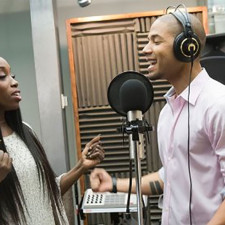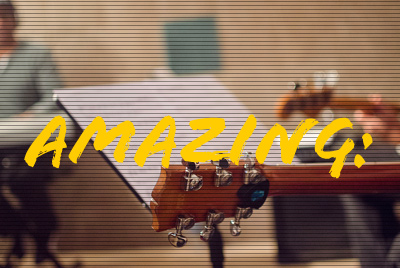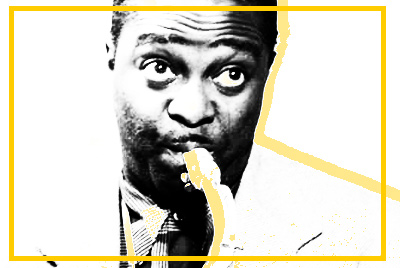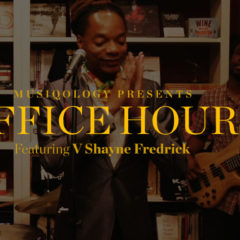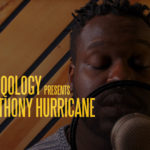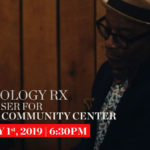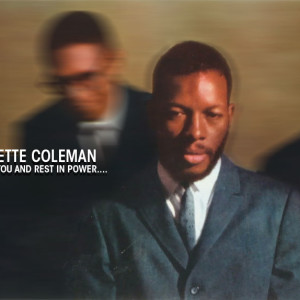My next writing project is a history of this thing called African American music. I’m on the part about black enslaved people creating a music system. As I cringe watching videos of local representatives of the state mount assaults against young and old, I think I can now write about the “blue note,” what it did, how it worked, how it meant. The act of distressing and making ambiguous the most elemental scale degrees (3, 5, 7) of the western tonal system could’ve been a powerful balm, a metaphorical space of free will, the magic against the Racecraft for these historical actors. And it probably helped heal overly stressed bodies of their diseases, too. Has “it” historically moved from bodies to instruments to analogue and digital machines?
It takes diligence to hear music and motivations created and dissipated long ago. I listen for ancestral voices in extant written and aural archives. I also try to hear the silent archives of timbre preferences, melodic gesture, and physical expressions passed from body-to-body in deliberate (and unconscious) acts of rote imitation. There’s been nothing permanent or fixed about this musical “language.” It has continually absorbed other musical practices into its constitution. And it has been readily grafted into other expressions as well. A music tradition born primarily of human commodities and developed in an emotional space between abjection and pleasure as resistance, it belies simplistic political, commercial, aesthetic and historical explanation. Will we ever get to the bottom of it all? Probably not, but we keep listening.
I attended a great concert recently with these issues in mind. Opera Philadelphia presented Spiritual Sketches, a duo project by tenor Lawrence Brownlee and pianist/composer Damien Sneed, at Philadelphia’s historic Union Baptist Church. History spoke and sang loudly that night. (The project is available on ITunes).
Founded in 1832, Union Baptist was one of the first African American congregations in the country, a place where the famous contralto, Marion Anderson sang as a child and called home. The spiritual as art song genre she championed was the context of this event, a program of tasteful—and at times, breathtaking—arrangements by Sneed. Drawing on his experience in an array of American and European traditions, Sneed showcased Brownlee’s magnificent instrument of shimmering high gloss and polish with arrangements that moved from delicate to robust, from modernist chromaticism to gut bucket, barrelhouse gospel. Brownlee is in Philadelphia singing the lead role in the Opera Philadelphia’s Charlie Parker’s YARDBIRD, a meditation on the modern jazz saxophonist’s life and art. Brownlee’s spirituals set and his role have drawn strong Philadelphia audiences (at this writing the opera has sold out).
The concert and the opera represent a collision of art worlds. When Harry T. Burleigh (1866-1949), one of Dvořák’s black students, published Jubilee Songs of the United States (1916), arranged for piano and voice, it became a landmark collection that created the genre of solo black art song. A concert artist, arranger, music editor, and composer, Burleigh wrote more than 300 works, many of which were popular in their time among singers of all backgrounds. Dvořák’s proclamations imploring American composers to use indigenous songs as a basis for concert music inspired Burleigh and many other composers—both black and white—to respond with new music. Sneed’s accompaniment was less Schubertian than it was a mix of ingenious American influences. Beyond his more obvious influences like Richard Smallwood, one could detect eclectic shades of Mary Lou Williams, Teddy Wilson, Thomas Whitfield, Geri Allen, Twinkie Clark, Chick Corea, Stevie Wonder and more. Sneed’s arrangements made the well-known melodies feel fresh and invigorated. But even with his innately beautiful conceptions, Sneed never overpowered the lyrical sentiment or Brownlee’s soulful and technically profound readings. That Charlie Parker’s bebop art—one that built a demanding compositional and improvisational practice on the forms and chord progressions of American popular song—is the grounds for operatic meditation represents yet another creative juxtaposition that hung in the air as a backdrop to the evening’s program.
Many believe that we are in a new era of social protest. That Marion Anderson, Roland Hayes and Paul Robeson sang at this church during their careers does connect a program of bel canto spirituals to moments in the past where this work was, indeed, a radical act. Some of that energy is, frankly, lost on the present generation. Philadelphia can, without doubt, take great pride in the long history of black musicians—from the late-18th century to the present—that have made musical revolutions. These histories should not be disposable. They should remain active in our consciousness. They hold not only valuable artistic lessons but can also be deployed to raise our political consciousness. I’m sure that was on the minds of the diverse audience that convened in a historic black church, one that was built in 1916 as a testament the congregation’s idea that they mattered, to borrow a contemporary phrase. And it was not lost on this listener that the spirituals once served the abolitionists well as they argued for the humanity of the enslaved. This evening would have been a dream to them.
Indeed, the ancestors would have been proud because Brownlee’s talent and poise stuns. He made the songs so lush and beautiful that it hurts sometimes. At various climatic points in a song, exactly where a gospel singer would have placed a gospel squall (singing at the upper end of ones tessitura with a closed throat—he performed what might be called a “bel canto shout,” a gesture that operatic singers do when they brush another timbral sheen on top of the note. It added the emotional weight and contour to the renditions as he used these sonic design elements throughout. This, together with Brownlee’s intermittent blues runs, joined bel canto and blues culture with an aplomb that was infectious and effective. The “concert” audience at these points, of course, morphed into a storefront, Sunday morning service, ignoring concert decorum and shouting back its collective approval. The program was very generous as Brownlee’s mega-talented cast mates from the opera, Angela Brown (soprano) and Will Liverman (baritone) offered selections that tore the roof off as well.
The sheer magnitude of all these art practices and histories convening in that church was a gift to the community. We heard both history and the future. Many thanks to the performers, to Union Baptist Church and to Opera Philadelphia for their vision. We need more events in this spirit to heal the land.
Bravo, Amen and Word.
Tags: Black Music, damien sneed, lawrence brownlee, Opera, Spirituals

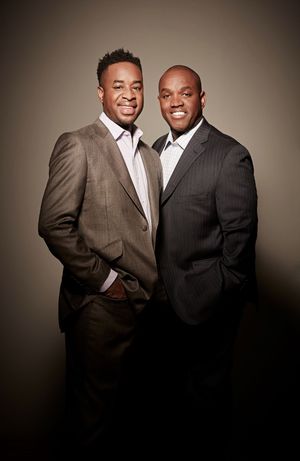

 Share On Facebook
Share On Facebook Tweet It
Tweet It

![[Video] BBC Documentary on Allen Toussaint](https://musiqology.com/blog/wp-content/uploads/2015/11/allen-toussaint-225x225.jpg)
![[VIDEO] Black Music and the Aesthetics of Protest](https://musiqology.com/blog/wp-content/uploads/2015/03/onlynchings1-225x225.jpg)
